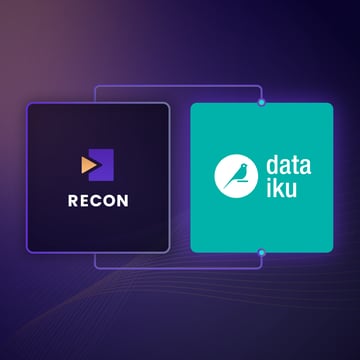Security Spotlight: Embracing a Culture of Security at Protect AI
Young companies, growing fast, often consider convenience over security. Prioritizing speed over inbuilt protections. At Protect AI we are trying to change that paradigm. To accomplish that, we have made deliberate choices when it comes to IT security. We prioritized security from day one, not just in our code or our cloud infrastructure, but in the habits, tools, and expectations that shape our culture.
When You Join Protect AI, Security Meets You on Day One
From the moment a new employee joins Protect AI, they’re onboarded with both access and accountability. We’ve intentionally designed our onboarding experience to be secure without becoming a hurdle. One of the very first meetings every new hire has is with a member of our InfoSec team, where they spend an hour learning about our systems, going through our day one security training, and getting to know a side of the company that can often be seen as an impediment to business needs.
Having such a positive and friendly reaction on their first day with a member of the security team has had very positive results for Protect AI. New employees will often reach out to their InfoSec onboarding team members after their initial onboarding with questions they encounter in the coming weeks of their employment, mainly about how to do certain business operations as securely as possible, but also with normal new hire inquiries, establishing the InfoSec team as an important and friendly point of contact. Promoting a positive security culture at Protect AI from day one.
Enforcement Across Operating Systems
Devices receive all required applications through automated deployment from day one, streamlining setup and ensuring consistency. Whether macOS, Windows, iOS, or Android, every endpoint is enrolled into our Unified Endpoint Management (UEM) system, not as a recommendation, but as a prerequisite. This enrollment defines our baseline: any device connecting to our network must be compliant, known, and managed.
Through UEM, we enforce full-disk encryption, screen lock policies, system protection settings, and OS version requirements. Mobile devices with access to Protect AI data follow the same standards, with added app installation restrictions and device attestation for sensitive internal access. This isn’t merely a hardening exercise, it’s about ensuring device readiness across the board. Security is embedded in how we welcome employees and how we govern every connection to our infrastructure, no matter the device or location.
A Culture of Teaching, Not Policing
At Protect AI, we lead with education. We don’t just dole out policies and expect blind compliance. Instead, Protect AI’s Security Team is embedded across onboarding, product development, and daily operations to ensure clarity, context, and support at every step. In previous roles, I experienced firsthand what poor onboarding looks like, unencrypted devices, missing applications, and no guidance. I had to manually configure security settings and install critical tools myself. That experience shaped my approach. I set out to change the standard: to make onboarding not only secure by default but also informative, empowering every employee from day one.
No topic is too simple for our team to tackle. If there is a deep understanding of the essentials of cybersecurity held by Protect AI employees, the average security awareness of the company rises. We have summited the mountainous subjects of why multi-factor authentication matters, the importance of Mobile Device Management (MDM) on corporate and personal devices, the benefits of hard drive encryption, and even a deep dive into why it is critical that computers are kept up to date on the latest software version.
Building a culture of security goes beyond the first day (even though we think our security onboarding program is superb). A culture of security is about reinforcing the “why” through regular, intentional, interactive engagement. During our biweekly All-Hands meetings, we share an ongoing security “snack bites” brief. This includes practical lessons that keep security top of mind and accessible for everyone. In Slack we host the “Phishbowl,” where employees post suspicious emails or SMS messages. It’s a collaborative learning space that encourages the entire company to identify threats, explain their reasoning, and allow these actions to become second nature.
Like the internet, our Security Team is always accessible, intentionally present and responsive across our communication channels. We make it easy for anyone at Protect AI to ask questions, seek clarification, or flag concerns, no matter the complexity. By promoting open dialogue, we create a culture where people feel empowered.
We are a young company and a small security team, and as such are not impervious to mistakes or gaps in our program, and we treat friction or edge cases as opportunities to improve, not reasons to compromise.
Security That Scales With Us
Culture isn’t built in a boardroom, it’s revealed in the small, consistent actions we take every day. At Protect AI, security is woven into our onboarding, our device fleet, our access policies, and the way we work when no one’s watching. It’s not a layer we add later, it’s the fabric we scale on.
I’ve never seen security as a roadblock. It’s a compass, not a cage. Coming from the tax industry, where rigid controls rule the day, and now working in AI, I’ve learned that effective security has to flex with innovation. It should guide, not gatekeep. My mantra has always been security over convenience, but at Protect AI, we don’t treat that as a tradeoff. We build convenience around security making it interactive, approachable, and yes, even a little fun. Security isn’t a blocker; it’s an enabler. It’s how we protect our people, our platform, and our purpose.
We’re not waiting to become a company that’s "big enough" to be secure. We’re growing secure from day one, leading from within, and making space for others to rise with us.
Find a topic you care about
Get the best of Protect AI Blogs and News delivered to your inbox
Subscribe our newsletter for latest AI news. Let's stay updated!




